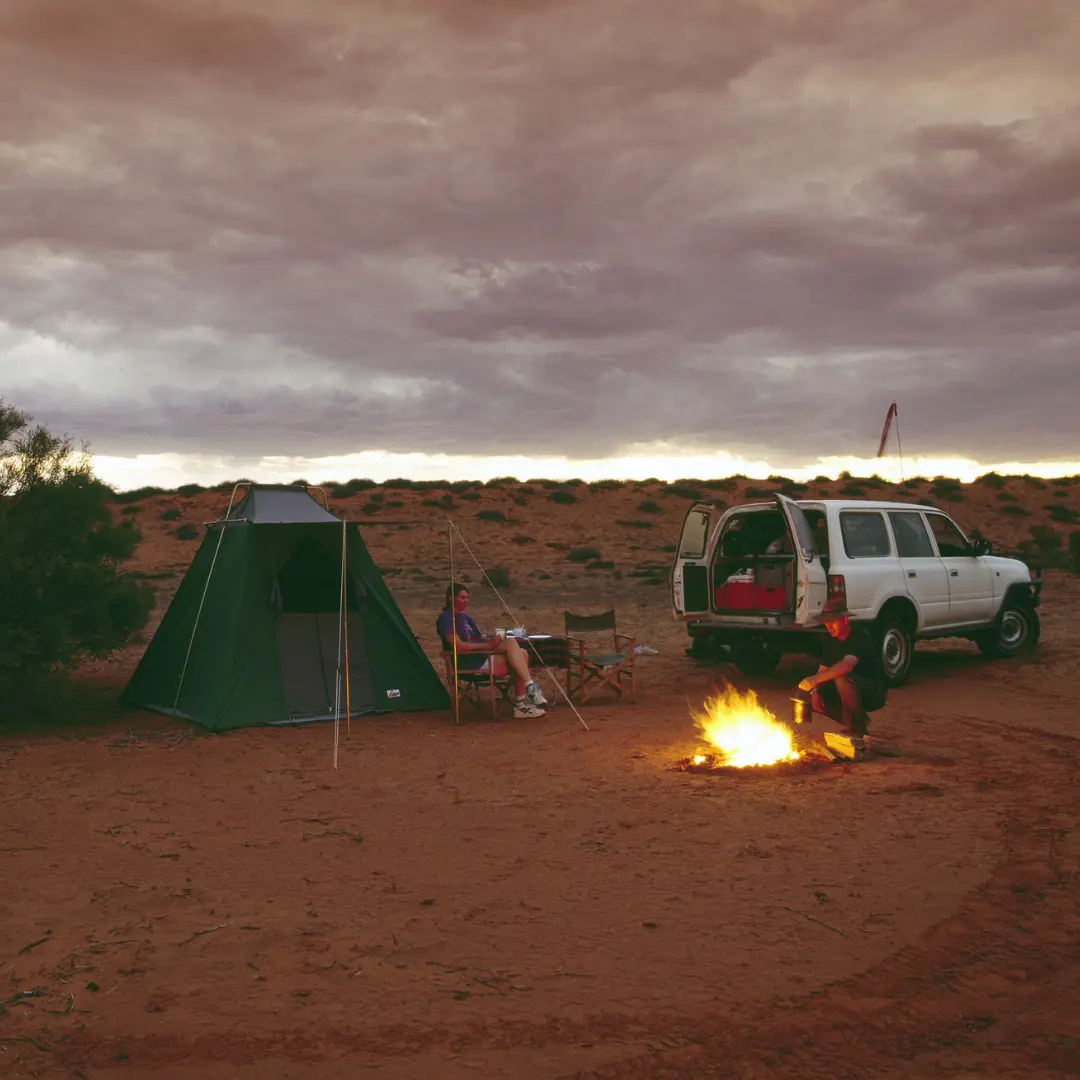Ok, so Here to Camp is all about helping me find dispersed camping, but what exactly is it anyways?
We’re glad you asked! Dispersed camping is camping on public lands outside of a designated campground. This means along predetermined Forest Service Roads, and on BLM land, you can simply pull up to camp almost anywhere (more on that below). And since you’re outside of a campground, there aren’t any services available, like running water, electricity, trash cans, picnic tables, or bathrooms. It’s just you, your gear, and the great outdoors. That is the draw for us – being outside of established campgrounds means dispersed camping is the ultimate experience for solitude, peace, and a genuine connection to the great outdoors. Oh, and did we mention – it’s free! That’s right – you won’t have to pay anything, at any time, for dispersed camping.
Well that sounds simply lovely. Why doesn’t everyone always do dispersed camping?
Well, there are a few obstacles standing in the way between you and your dispersed camping experience.
As dispersed camping happens outside of designated campgrounds, there isn’t a process to make reservations. Dispersed camping is purely first-come, first-serve. Beyond that, there isn’t really even a full listing of every dispersed camping site available, since you can in essence, camp nearly anywhere.
But fear not! With a bit of planning ahead (ahem, our amazing maps), and an adventurous mindset – we’re confident you’ll love dispersed camping as much as we do.

OK – I’m in. What else should I know about dispersed camping before my first trip?
While dispersed camping empowers you with the freedom to camp nearly anywhere – this doesn’t mean you can camp everywhere. A few guidelines and limitations to this ultimate freedom:
- Car Camping: Dispersed camping can be either motorized (“car camping”) or on foot, aka huffing it out into the backcountry. At Here to Camp, we focus specifically on dispersed car camping, and the guidelines below reflect this.
- Carefully Choose a Spot: Taken directly from our friends at the USFS: “Motorized dispersed camping is authorized within one vehicle length off of designated National Forest System routes, where not specifically prohibited, unsafe, or causing resource damage.” Ok, let’s break this down:
- Be on the lookout for private property signs, and ensure you are on a Forest Service road that allows dispersed camping (again, our amazing maps!).
- Use common sense and don’t camp anywhere that is unsafe, say exposed on a steep mountainside.
- Look for areas where others have camped before. While these are not designated campsites in a campground, you can still tell where a pre-existing dispersed site exists as opposed to pristine untouched wilderness. Camp in pre-existing spots, don’t create a new one. If you’re lucky, some of these spots may even be well established with picnic tables and fire rings.
- No Reservations: Dispersed camping means that there are no official, marked camp sites. Which unfortunately means there is no way to make a reservation, so you will never know with absolute certainty that the site you picked out will be open and available for you. There is a possibility that when you arrive to your perfectly selected spot, someone might already be camping there – happens to everyone at some point!
- Incomplete Information: Because dispersed camping sites are a network of unmarked, unaccounted for spaces there is no way to see every available dispersed site ahead of time. We’re searching for unmarked camping in some of the last wild areas available, and doing so using our phones and computers, there’s bound to be some limitations.
- Length of Stay: If you find that perfect dispersed camping spot, you are able to stay for a maximum of 14 days in a 28 day period and must move within a 25 mile radius after the initial 14 days. This rule keeps the land and resources intact by preventing overuse. It is also not legal to leave personal items on BLM land for more than 10 days unattended – you must be there enjoying it!
- Leave No Trace: it’s of the utmost importance that you leave your campsite and surrounding area in the same (if not better) condition as when you found it. This means pack out all trash and waste, don’t cut down trees for firewood, and don’t create a new spot just for yourself. We’ve got a full write up on the Leave No Trace principles here.
- 4×4 – most dispersed car camping is only accessible with an offroad capable vehicle aka 4×4.
- Rangers Are Your Friend – it’s always best to call the local Forest Service Ranger’s office ahead of time to review your plans and ask about seasonal closures and any specific regulations to be aware of.
As boring and time consuming it might be to understand and follow these guidelines, doing so ensures you have the best possible experience, and protects the great outdoors for future generations. Go you!
Alright, I have a good idea of what dispersed camping is, and how to do so responsibly. Now, how do I actually find a spot and get camping?
We thought you’d never ask! And you’re in luck – we’ve put together an in-depth guide on how to use our amazing maps to find the perfect dispersed camping spot just for you. Head over to our How-To Guide and check it out. See you out there!

0 Comments